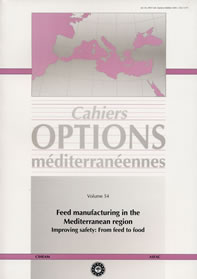| Article précédent | p. 173-175 | Article suivant |
Comparative bioefficacy of Lucantin(r) yellow in egg yolk pigmentation
After a two-week adaptation period, they received two experimental diets: one contained 3.2 mg per kg apoester carotenoic acid (Lucantinâ yellow). The other contained 10 mg per kg of yellow xanthophylls (500 mg per kg of a commercial product based on Marigold at 2 per cent). The two diets contained 30 mg per kg Lucantin(r) red, which provided 3 mg per kg canthaxanthin, and no other xanthophyll source. At the end of the period no significant differences were observed between the two xanthophyll sources as measured with the reference fan. These results suggest that a diet containing 30 mg/kg of Lucantinâ red (with a content of active product of 3.2 mg per kg of apoester) results in an egg yolk pigmentation equivalent to that provided by 10 mg per kg of yellow xanthophylls supplied in the form of a Marigold-based product.
- [ Afficher ]
- [ Télécharger ]
- [ Exporter la citation ]
Vous pouvez télécharger la citation au format :
- [ Imprimer ]
-
Mots-clés
ACIDE GRAS, CHOLESTEROL, GRAISSE ABDOMINALE, POULETCiter cet article
Esteve-García E., Günther C., Cera I. Comparative bioefficacy of Lucantin(r) yellow in egg yolk pigmentation. In : Brufau J. (ed.). Feed manufacturing in the Mediterranean region. Improving safety: From feed to food. Zaragoza : CIHEAM, 2001. p. 173-175. (Cahiers Options Méditerranéennes; n. 54). 3. Conference of Feed Manufacturers of the Mediterranean, 2000/03/22-24, Reus (Spain). http://om.ciheam.org/om/pdf/c54/01600027.pdf



